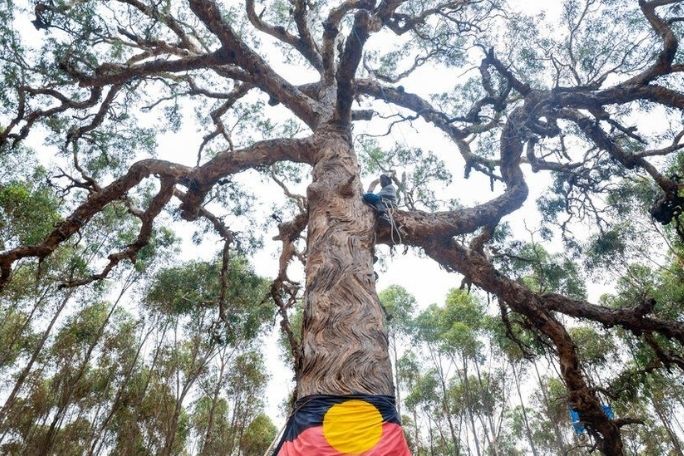Lesson summary
Students consider the consequences of urbanisation and how urbanisation can negatively affect environmental quality, especially in relation to the destruction of the sacred sites of Aboriginal and Torres Strait Islanders and the climate. Students explore the concept of Kanyini and consider whether respecting and protecting nature is a top priority in today’s society.
Learning intentions:
Students will...
- consider the consequences of urbanisation and how urbanisation can negatively affect environmental quality.
Success criteria:
Students can...
- cite examples of urbanisation negatively impacting the sacred sites of Aboriginal and Torres Strait Islanders
- define the concept of Kanyini
- educate audiences, through a piece of art, how urbanisation negatively impacts the environment in a variety of ways
- educate audiences, through a piece of art, how Kanyini can positively impact the environment.
Lesson guides and printables
Lesson details
Curriculum mapping
Australian Curriculum content descriptions:
Syllabus outcomes: GE5-2, GE5-3
General capabilities: Critical and Creative Thinking
Cross-curriculum priorities: Aboriginal & Torres Strait Islander Histories and Cultures, Sustainability
Relevant parts of Year 8 Geography achievement standards: Students explain interconnections within environments and between people and places and explain how they change places and environments. They compare alternative strategies to a geographical challenge, taking into account environmental, economic and social factors
Level of teacher scaffolding: Low – Support students in independent work
Resources required
- Art supplies – coloured pencils and textas, paints
- A device capable of presenting a video to the class
- White paper – A3 in size
Skills
This lesson is designed to build students’ competencies in the following skills:
- Communication
- Cultural understanding
- Creativity
- Critical thinking
Additional info
Cool would like to thank the Lord Mayor’s Charitable Foundation and The Vincent Fairfax Family Foundation for generously supporting the development of these lessons.


Welcome back!
Don't have an account yet?
Log in with:
Create your free Cool.org account.
Many of our resources are free, with an option to upgrade to Cool+ for premium content.
Already have an account?
Sign up with:
By signing up you accept Cool.org's Terms and Conditions(Opens in new tab) and Privacy Policy(Opens in new tab).